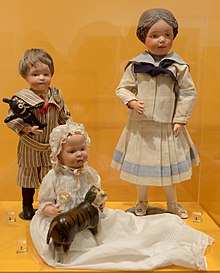
The toy piano, also known as the kinderklavier, is a small piano-like musical instrument. Most modern toy pianos use round metal rods, as opposed to strings in a regular piano, to produce sound. The U.S. Library of Congress recognizes the toy piano as a unique instrument with the subject designation, Toy Piano Scores: M175 T69. The most famous example of a dedicated composition for the instrument is the "Suite for Toy Piano" (1948) by John Cage.

A doll is a model typically of a human or humanoid character, often used as a toy for children. Dolls have also been used in traditional religious rituals throughout the world. Traditional dolls made of materials such as clay and wood are found in the Americas, Asia, Africa and Europe. The earliest documented dolls go back to the ancient civilizations of Egypt, Greece, and Rome. They have been made as crude, rudimentary playthings as well as elaborate art. Modern doll manufacturing has its roots in Germany, from the 15th century. With industrialization and new materials such as porcelain and plastic, dolls were increasingly mass-produced. During the 20th century, dolls became increasingly popular as collectibles.

An action figure is a poseable character model figure made most commonly of plastic, and often based upon characters from a film, comic book, military, video game or television program; fictional or historical. These figures are usually marketed toward boys and adult collectors. The term was coined by Hasbro in 1964 to market G.I. Joe to boys.

Margaret "Midge" Hadley Sherwood is a doll character in the Barbie line of toys by Mattel that was first released in 1963. She was marketed as Barbie's best friend.
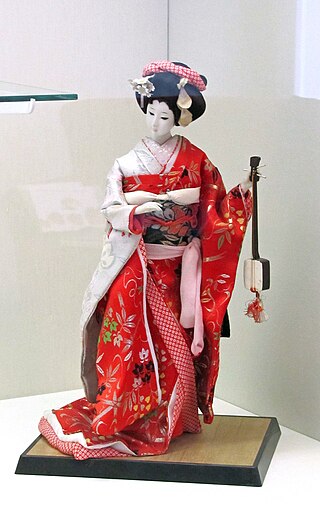
Japanese dolls are one of the traditional Japanese crafts.
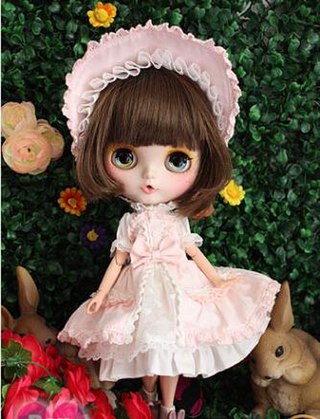
Blythe is a fashion doll, about 28 cm (11 inch) tall, with an oversized head and large eyes that change color with the pull of a string. It was created in 1972 and was initially only sold for one year in the United States by toy company Kenner. In 2001, the Japanese toy company Takara began producing new editions of Blythe dolls. There is a network of hobbyists who customize the doll for resale and create clothing and shoes for Blythe. Enthusiasts share photographs of their work and other types of dolls on the Internet.

Skipper Roberts is a doll created by Mattel in 1964 to be Barbie's younger sister.
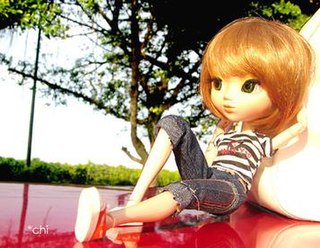
Pullip is a fashion doll created by Cheonsang Cheonha of South Korea in 2003. Pullip has a jointed plastic body and a relatively oversized head, with eyes that can move from side to side and eyelids that can blink. Pullip was first marketed by Jun Planning out of Japan; but the company underwent management changes in early 2009 and, since then, has operated out of South Korea under the name Groove. Since the release of the original female doll, other companion dolls have been added: male dolls Namu and Taeyang ; Taeyang's younger sister, Dal ; Dal's best friend, Byul ; and Pullip's younger brother, Isul. In February 2013, a new member of the Pullip family was introduced, called Yeolume, who is Pullip's future daughter. There is also a miniature line called Little Pullip, with 1:12 scale bodies and 1:6 scale heads. Pullip and her counterpart dolls are often customized by collectors, with the most common customizations including wig changes, eye color changes and rebodying.
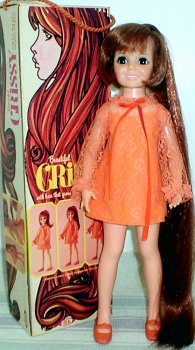
Crissy is an American fashion doll with a feature to adjust the length of its hair. Crissy was created in the Ideal Toy Corporation's prototype department in 1968.
Dollikins were dolls manufactured by Uneeda Doll Company, a company founded in 1917 by the Sklarsky family in Brooklyn, New York. Dollikins were marketed as The World's Most Posable Doll. The dolls were manufactured from 1957 to 1980. Originally, Dollikins were designed to compete with similar 18–21 inch sized dolls that were popular through the 1950s and 1960s, such as Madame Alexander's "Cissy", Ideal's "Revlon", American Character's "Toni", Deluxe Reading's "Candy" Horseman's "Sindy". Horseman's "Wonderkin" and Valentine's "Mannikin". The dolls started at 19-20" tall and featured sleepy eyes, although later versions were 12" and 6" without sleepy eyes due to the popularity of the Mattel Barbie Doll which is 11.5 inches and the Topper Dawn doll which was 6 inches. See Facebook by searching, The Dollikin Collective

What's Her Face was a line of customizable dolls that straddled the line between traditional fashion dolls and creative activity toys. Made by Mattel, the line ran from 2001–2003, and enjoyed only a modest success in a market dominated by Mattel's iconic Barbie and MGA Entertainment's Bratz dolls. Following the discontinuation of the What's Her Face line, their body molds were used for the Wee 3 Friends line of Barbie-related dolls. Several fashion, wig, and activity packs were also released for the What's Her Face line.

The Bild Lilli doll was a West German line of fashion doll launched by Greiner & Hausser Gmbh on August 12, 1955, and produced until 1964. Its design was based on the comic-strip character Lilli, created by Reinhard Beuthien for the tabloid newspaper Bild. The doll was made of polystyrene, came in two sizes, and had an available wardrobe of 1950s fashion. The Lilli doll was copied, and altered to some degree, for Mattel upon the direction of that company's co-founder, Ruth Handler. Mattel acquired the rights to Bild Lilli in 1964, and production of the German doll ceased, in favor of Mattel's new vinyl doll, which they called Barbie.
Betsy Wetsy was a "drink-and-wet" doll originally issued by the Ideal Toy Company of New York in 1934. It was one of the most popular dolls of its kind in the Post–World War II baby boom era.
Action figures have been an important and integral staple of the vast merchandising empire created around popular American rock band, Kiss. Kiss merchandising currently includes more than 2,000 product categories, and the limited availability of many products means that is a popular area of interest with collectors.
Tressy was an American fashion doll with a feature to adjust the length of its hair. Tressy was first produced by American Character Doll Company in the 1960s and later by Ideal Toy Company in the 1970s. The doll was invented and patented by modern furniture designer Jesse Dean and his wife, Diana.
Kiddles were dolls originally produced by toymaker Mattel Inc. in 1965. They were introduced at the 1966 New York Toy Fair and put on the market soon after. Initially about 3 inches tall, they were tiny by doll standards. The sensation they had created in the toy world had caused the other toy companies to produce their own tiny dolls.
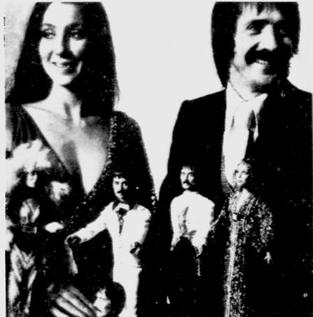
The Sonny & Cher dolls were a collection of 12-¼ inch high celebrity doll likenesses of pop rock duo Sonny & Cher. The line was released by Mego Corporation in 1976. The release of these fashion dolls coincided with the popularity of The Sonny & Cher Show prime time variety TV show.

A bisque doll or porcelain doll is a doll made partially or wholly out of bisque or biscuit porcelain. Bisque dolls are characterized by their realistic, skin-like matte finish. They had their peak of popularity between 1860 and 1900 with French and German dolls. Bisque dolls are collectible, and antique dolls can be worth thousands of dollars. Antique German and French bisque dolls from the 19th century were often made as children's playthings, but contemporary bisque dolls are predominantly made directly for the collectors market.
The Humpty Dumpty Circus is a lost short stop-motion film directed by J. Stuart Blackton and Albert E. Smith, the Anglo-American founders of Vitagraph Studios. There are no known surviving copies.
Albert Frederick Schoenhut (1849-1912) created the A. Schoenhut Company, one of the leading toy producers in America at the turn of the twentieth century. In 1872, he founded the Schoenhut Piano Company in Philadelphia, which later became known as the A. Schoenhut Company and was incorporated in 1897. They established a reputation, based on German handicraft traditions, and created toy pianos and other musical instruments in the early days. Eventually, they introduced dolls, play sets, games and more and they became the largest toy manufacturer in America. In 1919, Schoenhut patented his “All-Wood Perfection Art Doll” and in 1997, the United States Postal Service issued stamps of Classic American Dolls and included his wooden dolls as part of the collection.
